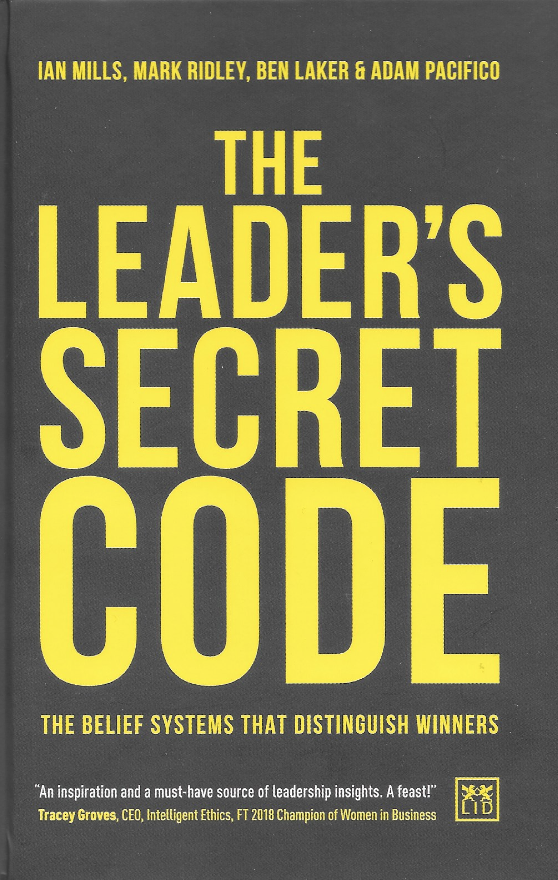The one sentence summary
Forensic analysis of how the most successful leaders operate reveals a code that you can then emulate.
WHAT THE BOOK SAYS

- This is all about the belief systems that distinguish winners and make for successful leadership. It is a rigorous evaluation of how leaders behave based on interviews and analysis across a mix of industries, cultures and context. It covers a highly comprehensive 700,000 written references on the topic, and conversations with around 1,000 leaders.
- By analysing the most frequent references to leadership qualities, it is possible to explain The Leader’s Secret Code, which boils down to 7 destination beliefs and 14 journey motivators that will get the job done in a thoughtful and effective way.
- The destination beliefs are:
1. Control: Someone or something must always be accountable for success.
2. Resilience: I am able to withstand tremendous pressure and spring back into shape.
3. Influence: Leadership is about how I make things happen through others
4. Communication: A good leader knows how to communicate with people and wider audiences, inside and outside the organisation.
5. Strategy: Strategy is about knowing where an organisation has to position itself and how to implement its resources to achievesuccess.
6. Empowerment: My people will feel empowered to take action and be the best they can be.
7. Fulfilment: I am most fulfilled when I am successful.
- Each of these is underpinned by a balance of two journey motivators (relative intensity of these out of 20 scored in brackets):
1. Control: directive or participative – the extent to which you are conducting from the front vs. believe in others to shape the direction of travel (8/12)
2. Resilience: work hard or smart – degree of importance attached to ‘working through’ the tough times by raising effort levels vs. seeking out new ways of addressing challenges (4/16)
3. Influence: transactional or transformational – degree of importance attached to using authority and well-defined structures and processes vs. leading through encouragement and inspiring others to go ‘above and beyond’. (10/10)
4. Communication: unemotional or emotional – use of fact-based and rational tones to deliver a message vs. importance of permitting personal vulnerability and emotional appeal. (8/12)
5. Strategy: fact-based or intuitive – extent to which strategy should be rooted in insight and research for predictable outcomes vs. having a strong sense of intuition borne of experience and preparedness to take risks. (16/4)
6. Empowerment: ambiguous or unambiguous – allowing people to assume accountability and ownership for success and what they learn when things go wrong vs. importance of providing clear boundaries as to the limit/ex tent of decision-making and action. (14/6)
7. Fulfilment: achievement or affiliation – the extent to which you believe fulfilment comes through being recognised for your personal and organisational success vs. sense of fulfilment derives from feelings of communal connection and success with those you lead. (1/19)
WHAT’S GOOD ABOUT IT
- You could certainly be quite a success if you can measure and match the balance of intensity as specified.
WHAT YOU HAVE TO WATCH
- As ever, all this may be easier said than done.
